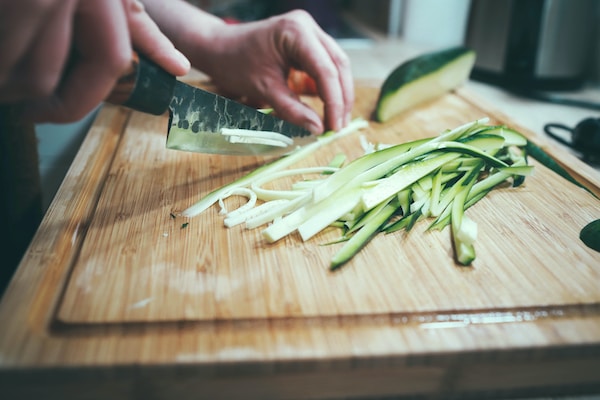
Types of Cutting Board: Pros and Cons for Your Kitchen
- 5 minutes reading time
A cutting board is an essential tool in every kitchen, serving as a reliable surface for cutting, chopping, and slicing ingredients. However, with so many types of cutting boards available on the market, it can be overwhelming to choose the right one for your needs.
Wood Cutting Boards
Wooden cutting boards are a classic choice in traditional kitchens. They offer several advantages, including:
- Durability: Wood cutting boards are known for their long-lasting durability, especially when made from hardwoods like maple or walnut.
- Knife-friendly: Wood is gentle on knife edges, reducing the chances of them dulling quickly.
- Aesthetically pleasing: Wooden cutting boards add warmth and charm to the kitchen.
However, wood cutting boards also have some drawbacks:
- Maintenance: They require regular oiling to avoid drying and cracking.
- Absorbency: Wood can absorb liquids and odors, making it more challenging to clean.
- Cost: Quality wood cutting boards can be more expensive than other options.
Plastic Cutting Boards
Plastic cutting boards have gained popularity for their affordability and ease of maintenance. Here are their pros and cons:
- Affordability: Plastic cutting boards are generally more budget-friendly than wood or other materials.
- Dishwasher-safe: They can be easily cleaned in the dishwasher, making them convenient for busy home cooks.
- Non-porous surface: Plastic boards are less likely to absorb liquids and odors, minimizing the risk of cross-contamination.
However, plastic cutting boards also have some downsides:
- Knife damage: They can be harsh on knives, leading to quicker dulling.
- Stains and scratches: Plastic boards can develop stubborn stains and scratch marks over time.
- Durability: While plastic boards are generally durable, they may not withstand heavy chopping or cutting.
Bamboo Cutting Boards
Bamboo cutting boards offer a sustainable and eco-friendly option for home cooks. Consider the following pros and cons of bamboo boards:
- Sustainability: Bamboo is a fast-growing and renewable resource, making it an environmentally friendly choice.
- Antimicrobial properties: Bamboo contains natural antimicrobial agents, reducing the risk of bacteria growth.
- Durability: Bamboo boards are strong and durable, making them suitable for heavy-duty use.
However, bamboo cutting boards also have a few drawbacks:
- Knife scarring: They can leave more noticeable knife marks compared to other materials.
- Maintenance: Bamboo boards require regular oiling to prevent drying and cracking.
- Absorption: Like wood, bamboo can absorb liquids and odors if not properly cared for.
Glass Cutting Boards
Glass cutting boards offer a sleek and hygienic option. Here are their pros and cons:
- Hygiene: Glass is non-porous, preventing bacteria from seeping into the surface.
- Easy to clean: Glass boards can be easily wiped clean or placed in the dishwasher.
- Heat-resistant: They can handle hot pots and pans without getting damaged.
However, glass cutting boards may not be the best choice due to the following reasons:
- Knife damage: Glass boards can quickly dull knives due to their hard surface.
- Slippery surface: Glass can be more slippery, making it less safe for cutting and chopping.
- Fragility: Glass boards are prone to breaking or chipping if mishandled or dropped.
Which Cutting Board Is Right for You?
Choosing the right cutting board depends on your personal preferences, cooking habits, and budget. Consider the following factors:
- Knife-friendly surfaces: If you primarily use sharp knives, wood or bamboo cutting boards may be more suitable.
- Budget: Plastic and bamboo cutting boards are generally more affordable options.
- Maintenance: Wood and bamboo boards require regular oiling, while plastic and glass boards are easier to clean.
In conclusion, each type of cutting board has its pros and cons. It's essential to evaluate your needs and preferences before selecting the perfect cutting board for your kitchen. Whether you prefer the warmth of wood, the convenience of plastic, the sustainability of bamboo, or the hygienic nature of glass, there's a cutting board out there to enhance your culinary experiences.
All your recipes in one app.
Organize all your recipes now with the best recipe management app. What are you waiting for?

